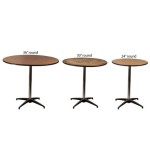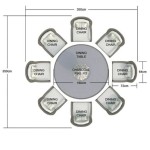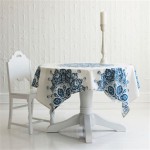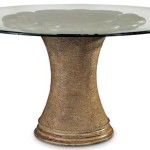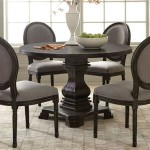Best Ways to Arrange Tables for a Wedding Reception
The arrangement of tables at a wedding reception is a critical element that significantly impacts the flow, atmosphere, and overall guest experience. A well-thought-out table arrangement can facilitate conversation, ensure comfortable movement around the venue, and contribute to the aesthetic appeal of the celebration. Consideration should be given to various factors, including the size and shape of the venue, the number of guests, the desired ambiance, and the practical requirements of service staff.
The planning process requires careful attention to detail and a thorough understanding of the available space. Neglecting this aspect can lead to overcrowding, awkward interactions, and difficulties for guests and staff alike. Therefore, exploring different table arrangement options and understanding their respective advantages and disadvantages is paramount to creating a memorable and enjoyable wedding reception.
Key Considerations Before Planning Table Arrangements
Before diving into specific table layouts, there are several essential factors to consider. These foundational elements will guide the decision-making process and ensure the chosen arrangement aligns with the overall vision for the wedding reception.
The guest list is arguably the most crucial element. The total number of attendees directly impacts the number of tables required and, consequently, the space needed. A precise headcount is necessary to avoid overcrowding or, conversely, an underfilled venue that lacks atmosphere. Understanding the breakdown of guests – families, friend groups, couples – also informs seating arrangements and table sizes.
The venue layout and dimensions are another pivotal aspect. Accurately measure the room, noting the location of fixed structures such as pillars, dance floors, bars, and entrances. These elements will dictate the possible configurations and limitations of the table arrangement. Understanding the shape of the room is equally important. Rectangular rooms lend themselves to different arrangements compared to square or irregularly shaped spaces. Also, consider the ceiling height; lower ceilings may necessitate layouts that minimize visual obstructions to create a sense of spaciousness.
Finally, the desired ambiance significantly influences table arrangement choices. A formal, traditional reception might call for structured, symmetrical layouts, while a more relaxed, informal atmosphere can accommodate less rigid, more creative configurations. Consider the placement of the head table, dance floor, and entertainment stage in relation to the guest tables. The goal is to create a layout that supports the desired mood and encourages guest interaction while providing convenient access to key features of the reception. Consider the distance between tables. A minimum of space should be available between tables. This should at least accommodate movement. If catering is buffet style, a larger space is usually necessary.
Common Table Arrangement Styles
Several established table arrangement styles cater to various wedding reception needs and preferences. Each style offers unique advantages and disadvantages in terms of space utilization, social interaction, and aesthetic appeal.
The most common arrangement is the round table layout. Round tables typically seat 8-10 guests and promote conversation among all seated individuals. This configuration is versatile and works well in various venue shapes. The circular form encourages a sense of inclusivity and makes it easier for guests to interact with those seated across from them. However, round tables can sometimes occupy more floor space than other options, potentially limiting the number of tables in smaller venues. Round tables are ideal for maximizing interaction and creating a warm, inviting atmosphere.
Long, rectangular tables, also known as banquet tables, offer a more formal and structured aesthetic. These tables can seat a larger number of guests per table, maximizing space efficiency. They are often arranged in rows or in a U-shape, creating a visually striking effect. Long tables are well-suited for creating a sense of community and are particularly effective in narrow or rectangular venues. However, conversation might be limited to those seated directly adjacent to each other. Long tables are often used for head tables, providing ample space for the wedding party.
Square table arrangements provide a modern and sophisticated look. Similar to round tables, square tables encourage interaction among all seated guests. They offer a distinct visual appeal and can create a geometric pattern within the venue. Square tables typically seat 4-8 guests, depending on their size. These tables work well in venues with clean lines and a contemporary aesthetic. However, they might not be as space-efficient as round or long tables in certain venue configurations. Square tables are a good alternative to round tables if you desire a more modern feel.
A less common configuration is the U-shaped table arrangement. This arrangement is most appropriate for smaller weddings. The U-shape table arrangement allows for most guests to sit together, and facilitates conversation between quests.
Optimizing Table Placement and Flow
Beyond the choice of table style, optimizing table placement and ensuring smooth guest flow is critical for a successful wedding reception. Thoughtful consideration of traffic patterns, accessibility, and sightlines will enhance the overall guest experience.
Maintaining clear pathways between tables is essential for guest movement and service staff efficiency. Adequately spaced aisles allow guests to easily navigate the venue, access the bar, dance floor, and restrooms, and socialize with other attendees. Service staff requires sufficient space to move around tables, serve food and beverages, and clear plates without disrupting guests. A general guideline is to allow at least three feet between chairs and other tables or obstacles. Wider pathways are necessary for high-traffic areas, such as near the buffet or dance floor.
Accessibility is another crucial aspect to consider. Ensure that guests with mobility issues can easily access their assigned tables and other important areas of the venue. Ramps or elevators should be available for guests using wheelchairs or other mobility aids. Tables designated for guests with disabilities should be positioned close to entrances and restrooms for convenient access. Prior communication with guests regarding accessibility needs is highly recommended.
Consider the sightlines from each table. Guests should have a clear view of the head table, dance floor, or stage. Avoiding obstructions, such as pillars or tall centerpieces, is essential. Strategically positioning tables to maximize sightlines enhances the enjoyment of the reception and allows guests to fully participate in the festivities. Also, avoid placing tables in direct line of speakers. This can be uncomfortable for guests. Finally, be sure to create paths which allow the bride and groom to easily visit with guests.
In addition to the space between tables, the placement of buffet lines and bars should also be considered. Place these in a large area, so guests have room to move around freely. This will also prevent bottlenecks in these areas.
Ultimately, the best way to arrange tables for a wedding reception is dependent upon the venue size, and layout, as well as the number of guests attending the wedding.

Breathtaking Ways To Arrange Your Tables Linentablecloth Wedding Table Layouts Reception Layout Rooms

Wedding Seating Etiquette How To Arrange Your Tables In 7 Simple Steps Hitched Co

Four Secrets To A Wedding Seating Chart For Your Guests

How Many Wedding Guests Fit At A Table Bellwether Events

Unique Table Configurations For Your Wedding Reception

Breathtaking Ways To Arrange Your Tables Linentablecloth Wedding Table Layouts Seating Plan Placement

How To Create A Stunning Wedding Floor Plan Seating Chart Planning Pod
:max_bytes(150000):strip_icc()/photo-d011b9734d484ae5ad01b685970a0708-f802d834a79e4800a0bf72bc8c766dcb.jpg?strip=all)
Wedding Seating Chart Templates To Simplify Planning

Creative Ideas For Seating Arrangements At Weddings Receptions

8 Ways To Arrange Your Tables Ay Mag
Related Posts

